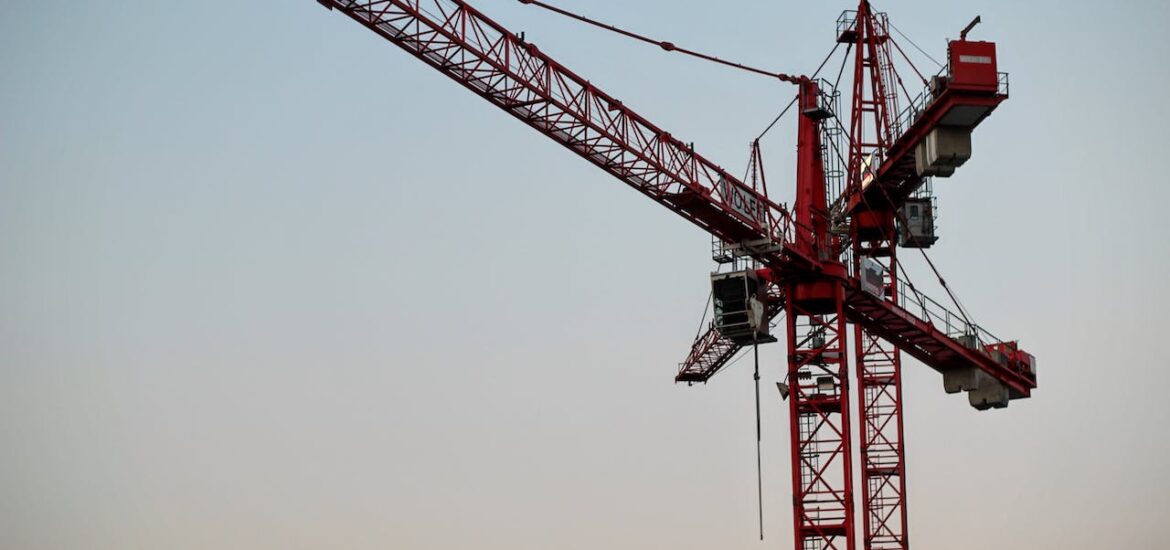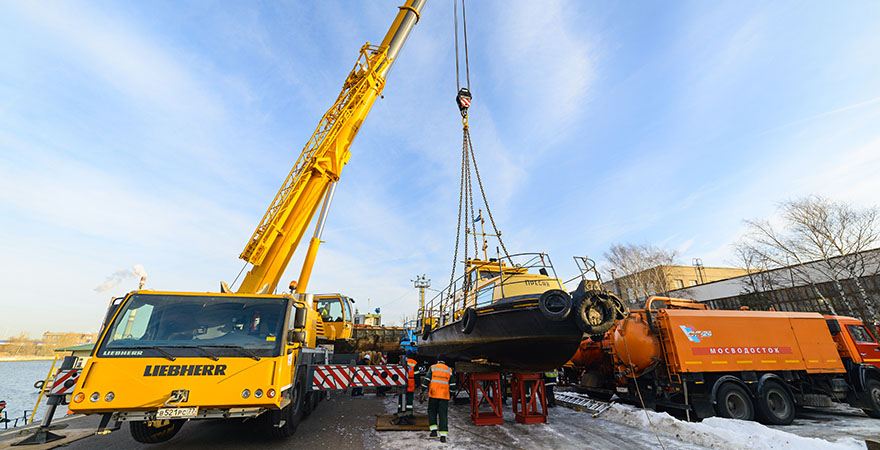Crane rigging plays a pivotal role in various heavy lifting operations, but its challenges are magnified when working in extreme environmental conditions. Furthermore, in times of disaster, crane rigging becomes a critical tool for swift and effective rescue operations. Therefore crane rigging requires proper planning and execution to face the challenges of extreme conditions with its indispensable role in disaster response.
Crane Rigging Challenges in Extreme Weather Conditions
From frigid cold to scorching heat, high winds, rain, and dusty environments, crane operators must adapt to these challenges to ensure safety and efficiency.
Working in Cold Weather
Operating cranes in cold weather presents distinct challenges. Low temperatures can affect the strength and flexibility of rigging materials. It’s essential to conduct thorough inspections and ensure proper maintenance to prevent accidents. Crane operators should be well-protected against the cold and trained to handle equipment effectively in these conditions.
Working in Hot Weather
High temperatures also impact crane rigging. Heat can weaken rigging materials, potentially compromising safety. Regular inspections become even more critical in hot weather. Operators must stay hydrated, take frequent breaks, and be aware of heat-related illnesses to maintain safe crane operations.
High Wind Conditions
Strong winds are a significant hazard in crane operations. Extreme wind conditions can make cranes unstable, endangering both personnel and equipment. Rigorous monitoring of wind speeds is necessary, and operators must adhere to safety protocols, which may involve suspending operations during high winds to ensure safety.
Rain and Storms
Rain and storms introduce added complexities to crane rigging. Wet conditions reduce friction on rigging materials, increasing the risk of slipping or load instability. To mitigate these risks, operators need to take extra precautions, such as using anti-slip measures and following specific safety procedures.
Working in Dusty Environments
Dusty environments can affect the performance of crane rigging. Dust particles can accumulate on rigging equipment, leading to decreased effectiveness and potential safety issues. Routine cleaning and maintenance are imperative in such environments to keep the rigging in optimal condition.
Crane Rigging Challenges in Disasters
When disaster strikes, whether it’s a devastating earthquake, a catastrophic hurricane, or a building collapse, rapid and effective rescue operations are of paramount importance. In these critical moments, crane rigging emerges as a crucial element in aiding the rescue and recovery efforts.
Immediate Response
One of the primary functions of crane rigging in disaster recovery is to facilitate an immediate response. Cranes, equipped with the appropriate rigging equipment, can rapidly clear away debris and obstructions. This action creates essential pathways for rescue teams to access survivors. Every second counts when it comes to saving lives, and the ability to quickly clear the way can make all the difference.
Heavy Lifting
Crane rigging services and equipment are specifically designed to handle heavy loads with precision and control. This capability becomes indispensable in situations where there is a need to lift and relocate large, unwieldy objects. These might include concrete slabs, steel beams, or even entire vehicles that could be blocking rescue operations.
Rescue Platform
Cranes with rigging can serve as elevated platforms for rescue teams. This feature enables them to reach individuals stranded on high floors or rooftops safely and efficiently. The crane becomes a lifeline, offering a secure means of evacuation for those in need.
Stability and Safety
Rigging is fundamental for ensuring the stability and safety of crane operations. It prevents loads from swinging or shifting during lifting, which is critical for minimizing the risk of accidents that could further complicate rescue missions. The ability to maintain control over heavy loads is vital for the safety of both rescue personnel and survivors.
Versatility
Crane rigging systems are adaptable to various terrains and situations. Whether it’s a flooded area, a partially collapsed building, or a mountainous region, rigging services DC can configure and position to meet the specific requirements of the disaster scenario. This versatility enhances their utility in a wide range of disaster response scenarios.
Team Collaboration
Effective communication and coordination between crane operators and rescue teams are paramount. Rigging plays a pivotal role in this collaboration by enabling precise load control and positioning. This precision allows rescuers to work seamlessly with the crane operator, ensuring that the operation runs smoothly and safely.
Resource Optimization
Crane rigging contributes to the optimization of available resources. By efficiently lifting and relocating heavy objects, it reduces the manpower required for these tasks. This not only conserves human resources but also minimizes the physical strain on rescue personnel, enabling them to focus on other critical aspects of the operation.
Time Efficiency
Time is often the most critical factor in disaster recovery and rescue operations. Crane rigging dramatically enhances time efficiency by expediting the process of accessing survivors and clearing debris. This efficiency significantly improves the chances of successful rescues and the overall effectiveness of the operation.
Instructions for Successful Safe Lift in Extreme Conditions
In extreme conditions, ensuring a safe and successful lift is of utmost importance. To achieve this, it’s essential to follow a straightforward set of instructions that prioritise safety and efficiency.
Understanding the Load
The first step in lift planning is to thoroughly understand the load. This includes its weight, dimensions, shape, and any special handling requirements. Knowing the load’s characteristics is fundamental to selecting the right equipment and rigging.Selecting the Right Equipment
Choosing the appropriate crane equipment for the lift is crucial. Different loads require different types of cranes, hoists, or forklifts. Selecting the right equipment ensures that the lift can be safe and efficient.
Assessing the Environment
Evaluating the lift’s environment is vital. Factors such as ground conditions, overhead obstacles, and weather conditions must be considered. These elements can impact the safety and success of the lift.
Creating a Rigging Plan
Developing a rigging plan is an essential step. It involves determining the rigging configuration, which includes selecting slings, shackles, and other rigging hardware. The rigging plan must ensure load stability and even weight distribution.
Testing and Inspections
Before the lift begins, equipment and rigging should undergo thorough inspections and testing. Any issues or defects must be addressed and resolved to avoid problems during the operation.
Post-Lift Evaluation
After the successful completion of the lift, a post-lift evaluation should be conducted. This assesses the lift’s overall performance, identifying any areas for improvement and ensuring that safety protocols were followed.
Conclusion
In the world of heavy lifting and disaster response, crane rentals VA stand as both a vital asset and a subject of unique challenges. Adapting to extreme weather conditions, ensuring safety, and maximizing efficiency are essential for crane operators. Moreover, when disaster strikes, crane rigging becomes a lifeline for rescue operations. By understanding load characteristics, selecting the right equipment, assessing the environment, and creating a thorough rigging plan, crane operators can navigate these challenges with precision and save lives in the most critical moments.



